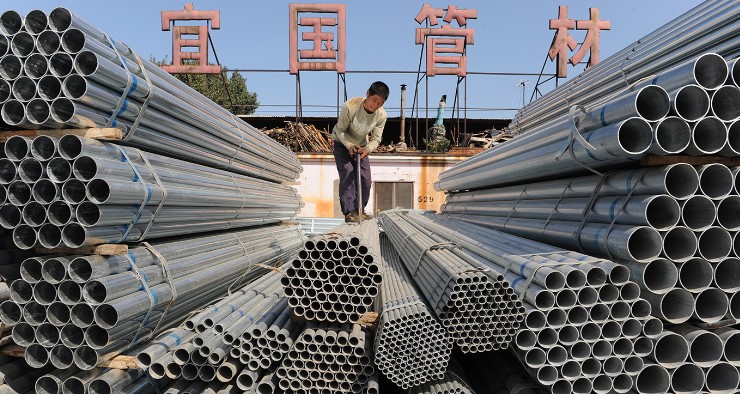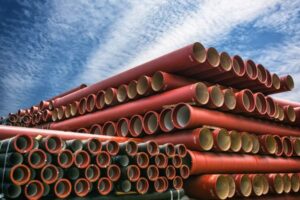
The steel business in China is quite gigantic. It has reigned for years as the largest producer of crude steel in the world, with the raw material forming the very basis of countless industries. Whether these are the huge skyscrapers that dot the sky or the nimble automobiles that dot the roads—steel is flexible like a building block for modern civilization, and right at the centre of its production stands China. This industry is deeply part and parcel of China’s economic development, feeding its construction boom, robust manufacturing sector, and ambitions in infrastructure projects.
But today’s steel markets in China are a time of great transformation and complication. Over the past few years, price declines in the steel market have brought challenges; however, it does bring opportunities that cannot be overlooked. Now, it is time to dig deeper into this complex landscape of the steel market in China, not only to understand the current challenges but also to see the best future possibilities.
Challenges in the Steel Industry of China
A Juggernaut with Growing Pains: Overcapacity and its Ripple Effects
Overcapacity is an issue that has forced the steel market in China. Overcapacity has been ruling the production of steel in China for years. The country’s demand for steel at the domestic level lies below what it produces, and thus, it has more steel than required. The consequences of overcapacity are not as simple as they relate to economics, but rather, overcapacity often results in overproduction, which leads to the inefficient use of resources and, at times, causes accompanying environmental issues since steel is highly energy-consuming.
Environmental Stewardship: Balancing Growth with Sustainability
During the past years, China has shown how much importance the government gives to environmental protection. The steel industry cannot be an exception to its advocacy for sustainability. They introduced new and strict norms on limitation in both emissions and energy consumption during the process of steel production. While these are indispensable policies for a clean environment in the long run, they do harbour their share of challenges for the steelmakers. Cleaner technologies usually demand remarkable upfront investment, hence exerting pressure on profit margins in an already price-sensitive market.
The Fickle Finger of Fate: Fluctuating Raw Material Prices
Another reason is the fluctuation in raw material prices; it impacts China’s steel market. Mostly imported, iron ore is an important raw material production for steel and faces high price fluctuation. Such large fluctuations may, in turn, disrupt the cost of production, squeezing the profit margins for Chinese steelmakers. Imagine a baker who, with rising flour prices, raises the price of his bread. That’s the kind of uncertainty steelmakers are dealing with from the global iron ore market.
A Geopolitical Tightrope Walk: Trade Disputes and Market Disruptions
The world political map can also have a bearing on the China steel market. Moreover, the market can also suffer from the potentiality of getting disturbed due to trade disputes and geopolitical tensions that may disrupt the supply chain and exports. These market swings are artificially created, and they prevent the steelmakers in China from being able to forecast in an orderly manner. In today’s interdependent world, a political tiff on one side of the globe can send ripples through steel factories on the other.
Greater Opportunities in the Steel Sector of China
Government Initiatives for Industry Consolidation and Market Stabilization
One of the biggest challenges recognized even by the Chinese government is overcapacity, and various measures have been taken. Such consolidation is, in fact, mergers and acquisitions of steel companies, where the intention is to make the production process efficient and create larger players. Think of it as consolidating many small bakeries into one big, more efficient bakery that, by using its resources more effectively, can then take advantage of the opportunities provided through economies of scale to lower costs.
This consolidation effort, first of all, benefits the market in the way that it reduces the number of steel producers, hence bringing the supply in line with the demand. The result may well be the stabilization of the China steel market price—as a point of predictability sorely needed by both producers and consumers. Second, larger companies usually have larger resources at their disposal to be able to develop and invest in advanced technologies. This will highly improve efficiency, reduce wastage, and cut down on the cost of production, resulting in a much more competitive steel industry in China in the world market.
Climbing the Value Chain: The Allure of High-Quality and Specialty Steel
While consolidation would take on the overcapacity challenge, another approach for Chinese steelmakers is moving up the value chain. This means that they will have to shift attention away from producing a lot of basic steel to becoming specialists in high-quality and speciality steel products. Imagine a baker who goes from selling basic loaves to creating intricate pastries and gourmet breads.
The company’s specialty and high-quality steels witness increasing demand from the range of advanced manufacturing applications: from automobiles and aeroplanes to medical equipment and construction projects requiring properties such as high strength or corrosion resistance. Of course, with specialization in these areas, Chinese steelmakers would also be charging a premium price and developing a niche for themselves to occupy a more lucrative section of the market.
Embracing Innovation: Efficiency Through Technological Advancements
Developing technology will give new, exciting opportunities to the steel industry in China. Steelmakers are beginning to adopt automation and start work on technological process optimization issues and issues relating to energy saving. The latter may be represented through the use of robots instead of human activities, or it is optimally synthesizing steps of production so as to avoid losses at the production stage. Energy-efficient technologies, on the other hand, reduce the needed power for steel production and consequently decrease the China steel market price and environmental effects.
Such advances could, in the long run, help in increasing the cost competitiveness of Chinese steel. Such technology adopted by steelmakers also allows them to keep their profit margins by quoting effective and competitive prices to compete with other producers. Further, this energy-efficient technology can easily comply with stricter environmental regulations in keeping up with a sustainable future.
Infrastructure Boom and the Belt and Road Initiative: Fuelling Demand
Steel underpins infrastructure development, and nowhere is this more evident than in the opportunity it offers for the steel industry in China, which is embarking on a vast new round of infrastructure development. From high-speed rail networks to sprawling new cities, it will all require vast quantities of steel. This domestic demand provides support to the industry and may help in counterbalancing any potential slackening in other sectors.
China is also eyeing the ambitious Belt and Road Initiative (BRI) that lies beyond its shores and promises its steel market. BRI is a very large-scale infrastructure program that aims at bringing together countries of not only Asia but also Europe and Africa with China. It is estimated that huge amounts of steel will be required for construction projects along the planned routes. Chinese steelmakers may therefore find new export markets for their products and may further make the position of China as a world leader in crude steel production through participation in BRI projects.
Looking Forward: A Steel Industry in Transformation
The China steel market is standing at a crossroads right now. There are many challenges, and in the same breath, a host of opportunities. The industry has reached a very transformative period now. This has been caused by major drivers such as government intervention, technology, and changing global shifts.
These changes are going to be adapted to by the Chinese steelmakers through consolidation, value chain climbing, and technological innovation to emerge out of this as strong survivors. Be it an industrial giant or not, adaptability and innovation by any standard are a must for capturing opportunities coming your way.
Also Check: Decoding Price Fluctuations: Tracing the Journey from Ore to Metal



